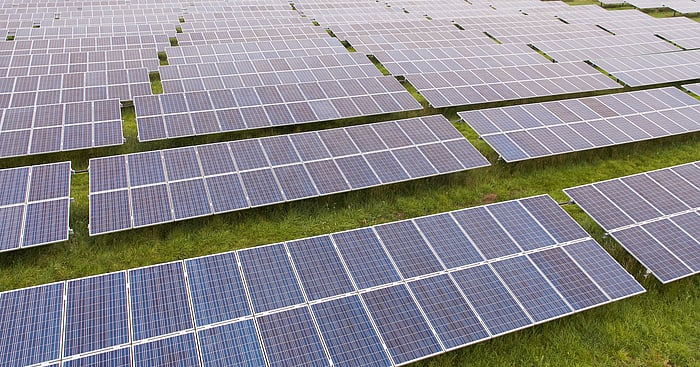TP Solar, Tata Power’s solar manufacturing arm and a subsidiary of Tata Power Renewable Energy, formally launched its 4.3-gigawatt (GW) solar cell and module manufacturing facility in Tirunelveli, Tamil Nadu, on February 6. It has become India’s largest single-location solar manufacturing facility, incorporating advanced technologies such as TOPCon and Mono PERC.
Mukesh Ambani-led Reliance Industries is setting up a 10 GW solar cell and module factory in Jamnagar, which is close to commencing production. Planned as a fully integrated Gigafactory, from raw materials to final cell and module production, Reliance aims to scale up its annual capacity to 20 GW by 2026.
At an investment summit in Vidarbha this week, JSW Group Chairman Sajjan Jindal announced plans to invest ₹36,000 crore in Butibori, Maharashtra, to establish 50 GW cell, wafer, and module manufacturing plants.
India’s solar cell and module manufacturing capacity is expanding at an exponential rate. Almost all leading domestic solar equipment manufacturers—including Waaree Energies, Vikram Solar, Gautam Solar, Adani Solar, and Renew—are planning capacity expansions of several gigawatts. The country’s solar cell manufacturing capacity is expected to reach 50-55 GW by FY27, a fivefold increase from 10 GW at the end of FY24, according to Crisil Ratings. India’s module-making capacity had already surged to 60 GW by March 2024 from 7 GW in March 2020 and continues to grow. Four leading domestic cell manufacturers, which account for 54% of the country’s total cell manufacturing capacity, are set to invest ₹28,000-30,000 crore by FY27. This will transform India from an import-dependent country to an exporter of solar equipment.
Declining imports, rising exports
Despite India’s massive expansion in solar energy, the sharp rise in domestic module production has reduced module imports to 25% of total consumption this fiscal, down from 45% last year. However, the import of solar cells—an essential input for module manufacturing—remains high, with 80% coming from China. Given that India plans to add 60-65 GW of solar capacity over the next two fiscal years, import dependence on cells could rise due to the shortfall in domestic supply.
“Cell capacity expansion announcements of 45-50 GW will take India’s overall cell-making capacity to 55 GW over the next two fiscals,” says Ankit Hakhu, Director, Crisil Ratings.
The import of solar panels—mainly from China, Malaysia, and Vietnam—has been declining over the last 3-4 years. The value of imports fell from $3,363.20 million in FY22 to $943.53 million in FY23, and $1,136.28 million by September FY24. However, given the rapid expansion in the solar sector, India’s solar panel imports are likely to remain significant. The country added 24.5 GW of new solar power capacity in 2024, more than double the addition in 2023, marking its highest-ever annual installation.
In contrast, Indian PV manufacturers exported approximately $2 billion worth of PV modules in FY24, with export values increasing more than 23 times between FY22 and FY24, according to estimates by the Institute for Energy Economics and Financial Analysis. India exports PV products to South Africa, Somalia, Kenya, the UAE, Afghanistan, Nepal, and Bangladesh. Leading domestic PV manufacturers such as Waaree Energies, Adani Solar, and Vikram Solar exported more than half of their production in FY24.
US factor and policy boosts
China dominates the global solar supply chain, controlling 80% of solar cell production and 70-80% of solar module production, led by companies such as Tongwei Solar (TW-Solar), LONGi Green Energy, JA Solar, Trina Solar, and Jinko Solar. Of the top six global solar equipment manufacturers, five are from China.
In response, the US imposed tariffs on imported solar cells, EVs, batteries, and critical minerals from China on September 27, 2024, with further restrictions likely under Donald Trump’s administration.
India primarily exports solar equipment to the US, which accounted for 97% of India’s PV exports in FY23 and 99% in FY24. With the US-China trade war escalating, Indian manufacturers have a significant opportunity to expand their market share in the US. Companies like Waaree Energies and Vikram Solar are already planning to set up production facilities in the US to capitalise on this shift.
To reduce import dependence and bolster domestic manufacturing, the Indian government has mandated the use of solar cells only from its Approved List of Cell Manufacturers (ALCM) in open-access and net-metering projects and government-supported initiatives. The Production-Linked Incentive (PLI) scheme and domestic content requirements are also expected to boost local production, says Ankit Hakhu of Crisil Ratings.
Government support for solar expansion
Launched in February 2024, the PM Surya Ghar Muft Bijli Yojana (PMSGMBY) is the world’s largest domestic rooftop solar initiative, targeting one crore households by March 2027. Within just 10 months of its launch, 7 lakh installations have been completed, a tenfold increase in the monthly installation rate compared to pre-implementation levels, according to the Ministry of New and Renewable Energy.
In March 2016, installed solar capacity under the Rooftop PV and Small Solar Power Generation Programme (RPSSGP) stood at 90.8 MW. By March 2024, total installed capacity had surged to 11,503 MW.
For off-grid projects, as of 2024, India has:
17.23 lakh solar home lights
84.59 lakh solar lamps
9.44 lakh solar streetlights
216.86 GW of installed solar power capacity
This marks a sharp increase from 2016, when installed capacities were significantly lower.
Another major initiative, the PM-KUSUM Scheme, launched in 2019, supports farmers by offering financial assistance for solar-powered irrigation systems, including solar pumps and grid-connected solar power plants. By December 2024, over 6.1 lakh solar pumps had been installed across India, benefiting more than 4 lakh farmers and solarising 35 lakh grid-connected agriculture pumps.
Thanks to such initiatives, India’s total installed solar capacity has now reached 97.86 GW.
Source:https://www.fortuneindia.com/macro/indias-solar-boom-domestic-manufacturing-surges-as-exports-soar/120472

